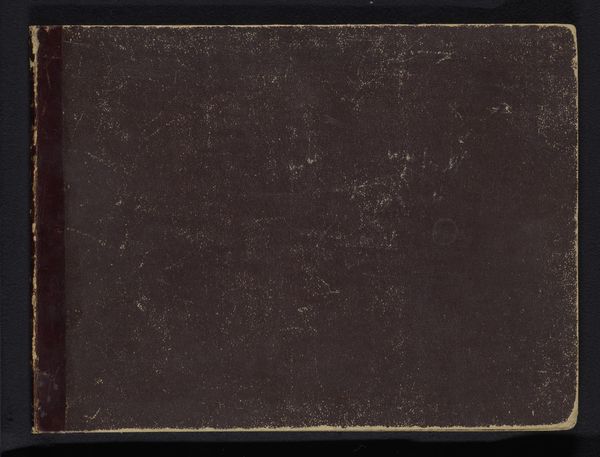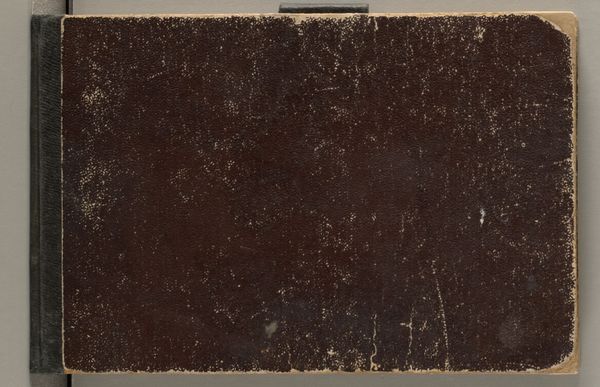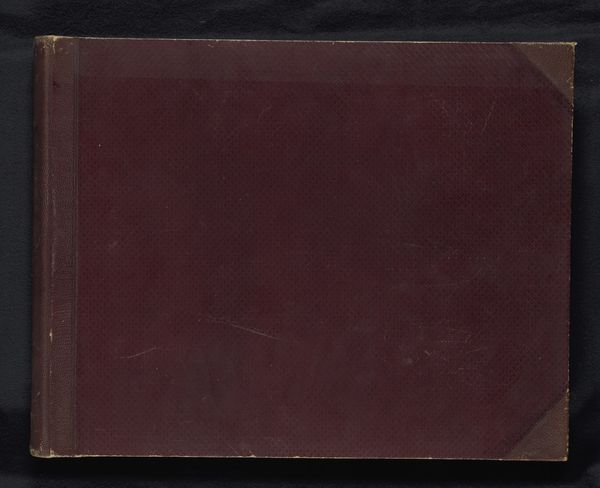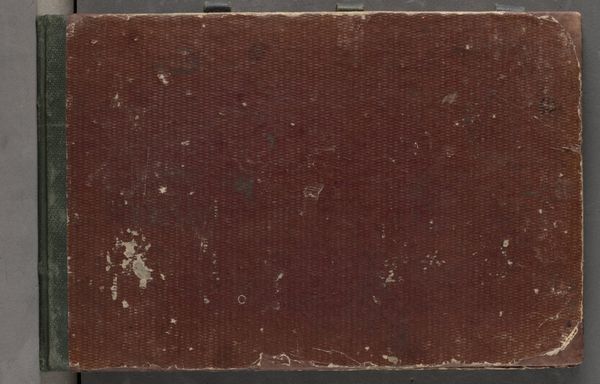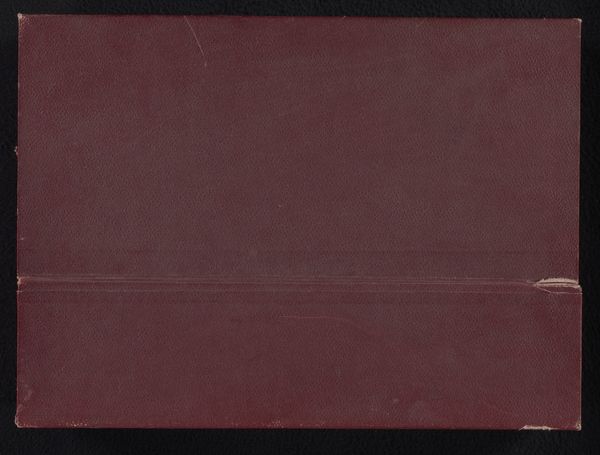![[Album of Paris Crime Scenes] by Alphonse Bertillon](/_next/image?url=https%3A%2F%2Fd2w8kbdekdi1gv.cloudfront.net%2FeyJidWNrZXQiOiAiYXJ0ZXJhLWltYWdlcy1idWNrZXQiLCAia2V5IjogImFydHdvcmtzL2EyMWMxNGIzLTU2YjQtNGMxNS1hNDM2LWFlZTg4Y2I2NmE4MS9hMjFjMTRiMy01NmI0LTRjMTUtYTQzNi1hZWU4OGNiNjZhODFfZnVsbC5qcGciLCAiZWRpdHMiOiB7InJlc2l6ZSI6IHsid2lkdGgiOiAxOTIwLCAiaGVpZ2h0IjogMTkyMCwgImZpdCI6ICJpbnNpZGUifX19&w=3840&q=75)
Dimensions: Overall: 24.3 x 31cm (9 9/16 x 12 3/16in.) Page: 23 x 29 cm (9 1/16 x 11 7/16 in.)
Copyright: Public Domain
Curator: This intriguing artifact is "[Album of Paris Crime Scenes]", a photographic compilation put together by Alphonse Bertillon between 1901 and 1908. Editor: Well, it’s unassuming from the outside—a plain, dark album cover, almost featureless. It gives little hint of the grim contents within. You might almost think it's a ledger or guestbook. Curator: Exactly. It's the deceptive face of order applied to chaos. Bertillon was obsessed with categorization, using photography as a means to codify and control the uncontrollable realities of criminal life. Think about the power those "albumen-prints" held. Editor: Albumen-prints…a material process directly tied to the capture and documentation of specific, physical spaces impacted by human transgression. I can only imagine the conditions and labor involved in taking and processing these crime scene photographs in the early 1900s. There is nothing romantic in its original production. Curator: No, there isn't, and Bertillon's photographic standardization is what gives these images their stark, almost surgical quality. Each photograph is an attempt to objectively capture details, which he viewed as the foundation of knowledge, turning those ghastly places into potent symbolic sites. Editor: You’re right; these pictures are both indexical records and staged documents. The choice of format, albumen printing, allowed for crisp details, and reproducibility. However, its own materiality would have decayed without rigorous attention, requiring particular dark room spaces, a particular craft to preserve and fix an image of this kind, Curator: And perhaps that preservation mimics the desire to archive collective memory of a place. These photos offered then, as now, a way to grapple with human transgression; a desire to preserve scenes otherwise too terrible to process without an intermediary object. Editor: So, by producing an objective archive of a site otherwise chaotic and disordered, this technology enables systems of control and power…it’s quite insidious. Curator: In a way, these photographic crime scenes mirror our ongoing, perhaps compulsive need to assign order to what is, at its core, deeply disordered. The cultural continuity resides in our psychological drive towards organizing what cannot, in reality, be fully managed or fixed. Editor: Seeing it from the perspective of photographic processes…I’m newly aware of how much labor went into producing such supposedly objective renderings, and what those decisions mean for how we read crime, social space, and representation.
Comments
No comments
Be the first to comment and join the conversation on the ultimate creative platform.


